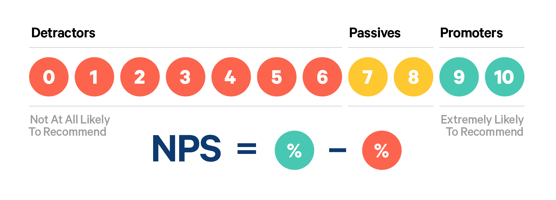For healthy revenue growth, ditch the proxy business metrics
Billy Beane, the protagonist of Michael Lewis’s best seller Moneyball, asked a simple question: Why do we make critical business decisions based on proxy measures as opposed to true outcomes?
 His domain, of course, was baseball. He surmised that most baseball scouts used flawed methods to identify talent.
His domain, of course, was baseball. He surmised that most baseball scouts used flawed methods to identify talent.
He observed that they would often use indirect measures to assess potential. For example, scouts would note a player’s running speed, arm strength, or number of practice hours. They believed these were critical attributes that predicted success.
Sure, it stands to reason that a faster, stronger, and more disciplined individual would make for a better baseball player. But Beane astutely questioned whether these attributes translate to winning games.
Identifying the best predictors of business growth
I believe it’s helpful to think about business growth through the same lens.
 At Tingono, we’re focused on Net Revenue Retention (NRR). It’s the north star of SaaS businesses. This metric tracks how well a company is retaining their existing customers and whether those customers are buying more.
At Tingono, we’re focused on Net Revenue Retention (NRR). It’s the north star of SaaS businesses. This metric tracks how well a company is retaining their existing customers and whether those customers are buying more.
The impact of customer retention and expansion on a company’s top line is so critical that an entire function was born to manage it. You know it as Customer Success.
And Customer Success has grown considerably over the last decade to better manage its charter. There are now software platforms, specific strategies, and key metrics used to ensure their success.
Ultimately, Customer Success is judged on customer churn, acquisition costs, and upsell opportunities. These are their end goals—very similar to Beane’s end goal of winning baseball games.
 However, like Beane observed, we currently see a lot of proxies in play for Customer Success teams. For instance, Customer Success teams commonly report on:
However, like Beane observed, we currently see a lot of proxies in play for Customer Success teams. For instance, Customer Success teams commonly report on:
- Successful QBRs delivered
- Customer Health scores
- Successful playbooks executed
- Onboarding %
- NPS scores
Sure, it makes sense that adopting practices that optimize these measures will lead to better revenue outcomes. Gainsight, the company that delivers one of the most widely used customer success platforms, supported this idea when they shared that investing in CS supports revenue gains.
Are proxy metrics still viable business metrics?
But the Billy Beane question remains. Why are we using proxy measures like health scores to figure out whether a customer account might expand?
Identifying expansion opportunities based on a health score is the equivalent of selecting baseball players based on speed and arm strength. In baseball, we don’t know if speed or arm strength will translate to how good a baseball player is. In SaaS, we don’t know if a health score will translate to buying more.
What we do know is—just like NPS or CSAT—a health score doesn’t require a customer to open their wallet.
Learning to draw a direct line to revenue growth
I think we can do better here. Why are we not drawing direct lines between customer activity and recurring revenue?
Being able to predict how much recurring revenue a customer will create in the future based on their activity is a valuable insight. And the great news is this is an insight we can currently generate based on a customer’s interactions with Sales, Marketing, CS, and your product.
These predictions will show the impact on recurring revenue and therefore suggest the best next action. If the customer is a churn risk, you run your typical playbook to right the ship. If the customer signals an expansion opportunity exists, you proactively close the deal.
Given this, I have to ask, why do we need to use proxies to determine possible revenue outcomes? The short answer is we don’t!
Tingono is drawing a direct line between customer activity and recurring revenue
Customer Success best practices are important. Even necessary. But as one of our design partners once told us, “Customer Success really comes down to identifying your leading indicators of revenue expansion and churn and doing something about it.”
We’ve heard this story again and again from people that have felt the revenue proxy problem firsthand. As Parry mentioned, we’ve felt it ourselves. That’s why we’re doing something about it.
We’re building a solution you can use to draw a direct line between customer activity and resulting revenue. If this interests you, let’s talk!





